Student Union
Biden Plans to Forgive Some Federal Student Loans
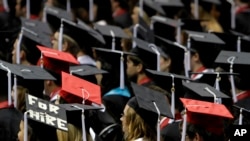
President Joe Biden plans to make sweeping changes for students who borrow loans from the federal government, which could result in major relief for many younger Americans.
As of 2019, about one-third of Americans younger than 30 held student loan debt, according to the Pew Research Center. The average debt load was $29,200 in 2018, according to The Institute for College Access and Success. Those with student loans are more likely to report struggling financially, according to Pew.
According to Federal Student Aid, an office of the Department of Education, the outstanding student loan debt is over $1.5 trillion, held by 42.9 million people. The government limits federal borrowing by undergrads to $31,000 for students who receive contributions from their parents, and $57,500 for students who are independent, according to the Brookings Institution.
“Those who owe more than that almost always have borrowed for graduate school,” Brookings explained.
It’s important to quantify student debt, Brookings said. Most undergrads finish college with little or modest debt. About 30% of undergrads leave school with no debt, and about 25% with less than $20,000, it reported.
“Despite horror stories about college grads with six-figure debt loads, only 6% of borrowers owe more than $100,000 — and they owe about one-third of all the student debt,” Brookings wrote in January 2020.
The Biden plan
Under Biden’s plan, individuals making $25,000 or less per year would not have to make loan payments, and interest would not accrue on these loans.
His plan does not say if the $25,000 income is based on the Free Application for Federal Student Aid (FAFSA), a U.S. government application through which students apply for and receive federal loans. FAFSA loans are determined by the college attended and are calculated using the income of the student and their contributing parents. It is unclear if parents who claim and receive tax deductions for their dependents will lose that deduction.
Biden’s plan does not address the Direct PLUS loan that allows parents to take out loans to help undergraduate students pay for higher education.
As his website states, those who make over this cap will “pay 5% of their discretionary income (income minus taxes and essential spending like housing and food) over $25,00 toward their loans.” Individuals with both new or existing loans would automatically be enrolled in this income-based program.
After 20 years, those “who have responsibly made payments through the program will be 100% forgiven,” the site said. It is not explained what “responsible” means in this instance.
For public servants, Biden wants to create a program that “offers $10,000 of undergraduate or graduate student debt relief for every year of national or community service, up to five years,” according to his website. Those who work in schools, nonprofit settings and government will automatically be enrolled in this program.
A November 2020 survey from the Data for Progress asked 1,087 likely voters about this plan. Out of those who identified as Democrats, 48% strongly supported the idea; 26% of Republicans strongly opposed.
Included in Biden’s plan is fixing the Public Service Loan Forgiveness program by passing the What You Can Do For Your Country Act of 2019, spearheaded by Democratic Senators Tim Kaine and Kirsten Gillibrand, that would “ensure millions of teachers, social workers, members of the military, first responders, nurses, public defenders, and many other public service professionals will qualify for the loan forgiveness they have earned.”
Biden will extend emergency relief implemented in March 2020 by former Secretary of Education Betsy DeVos until October, that suspended loan payments, halted collections on defaulted loans and set interest rates to 0% for 60 days because of the pandemic.
Biden has announced plans to tackle college affordability, as well. He plans to make university’s tuition-free for those whose families earn less than $125,000 a year. Biden also wants to double the federal Pell Grant, awarded to students who demonstrate exceptional financial need. The maximum amount for the award is $6,345 for the 2020-21 academic year and is not repaid.
The president said he wants to take extra steps to crack down on private lenders, expand post-9/11 GI Bill benefits, and invest in institutions that serve students of color, like Historically Black Colleges and Universities (HBCUs) and other minority-serving institutions.
Other ideas
Other Democrats have advocated for more extensive relief.
Since September, Democratic Senators Elizabeth Warren and Chuck Schumer have called for President Biden to — through executive order — forgive $50,000 in federal student loan debt for borrowers under the Higher Education Act. The plan would make sure that there is no tax liability for the borrowers upon cancellation.
“For tens of millions of borrowers, student loan debt has become an impossible burden,” Warren said in December. “I just want to give you all some numbers. Nearly 43 million Americans are buried under $1.5 trillion of federal student loan debt. Close to 9 million of those borrowers are in default.”
At Columbia University, a private Ivy League school in New York, students have organized a tuition strike.
Willem Morris, an organizer with Columbia’s chapter of the Young Democratic Socialists of America, said that students became inspired after watching other Ivy League institutions cut tuition. In July 2020, Princeton announced it would discount its tuition by 10%.
“But students saw the concessions other schools are making and saw that Columbia again, was going to charge the same price for these Zoom classes in this economic crisis,” Morris told VOA. “And students have decided that they don't want to accept this anymore.”
More than 4,100 students have signed on to this tuition strike, according to Morris. Columbia had already waived late fees to those who do not pay their tuition on time, Morris explained.
See all News Updates of the Day
- By VOA News
Competition grows for international students eyeing Yale
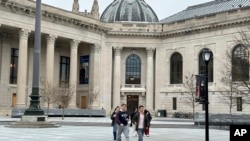
It’s tough to gain admission to Yale University, and it’s getting even tougher for international students as standout students from around the world set their sights on Yale.
The Yale Dale News, the campus newspaper, takes a look at the situation here.
- By VOA News
Student from Ethiopia says Whitman College culture made it easy to settle in

Ruth Chane, a computer science major from Ethiopia, writes about her experiences settling into student life at Whitman College in the U.S. state of Washington.
"The community at Whitman College made sure I felt welcomed even before I stepped foot on campus," she says.
- By VOA News
Claremont Colleges student gets a shock when she heads home to Shanghai
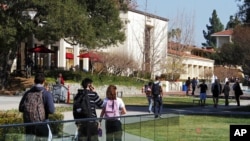
In The Student Life, the student newspaper for the Claremont Colleges, a consortium of five liberal art colleges and two graduate schools in Claremont, California, student Rochelle Lu writes about readjusting to her Shanghai home after spending a semester in the United States.
- By VOA News
Cedarville University aims to ease transition for international students
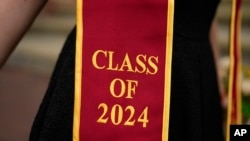
Cedarville University in the U.S. state of Ohio says it’s got more than 140 international students representing 44 countries.
Here, the school interviews Jonathan Sutton, director of international student services. He talks about his job and the opportunities for international students on campus.
- By VOA News
Morehouse College offers prospective students tips on applying and thriving
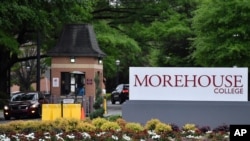
Morehouse College, a private, historically Black liberal arts college in the U.S. state of Georgia, offers a guide for international students interested in attending the school.
Among the tips to apply and thrive at Morehouse:
- Take advantage of the school’s orientation program
- Turn to the school’s Center for Academic Success for tutoring, support and more
- Immerse yourself in campus life via clubs and societies